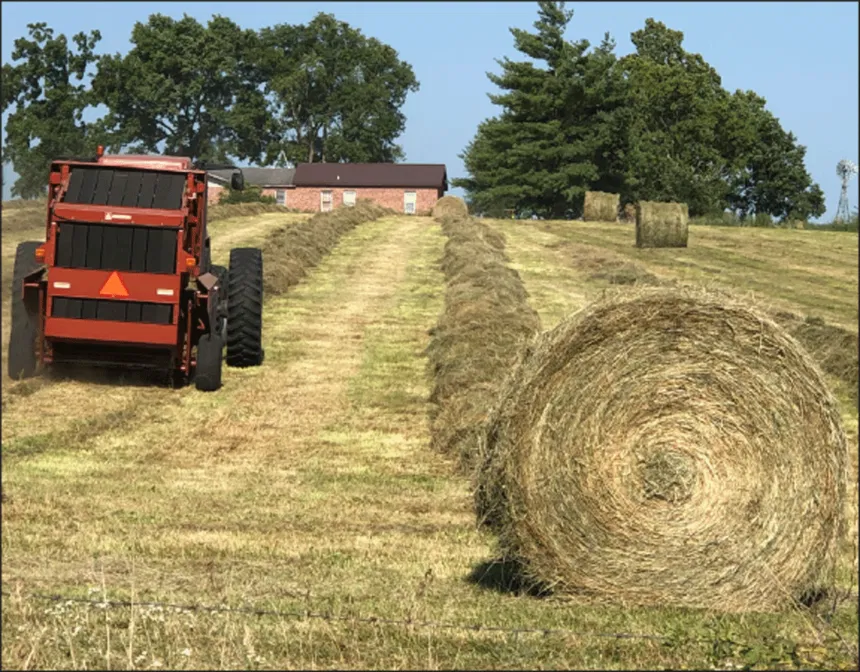Cool, dry spring affects 2025 hay cuttings

Missouri Farmer Today
via TN Content Exchange
After the first hay cutting, the timing of second and even third cuttings — as well as how much hay farmers get from those — can have some variation based on weather conditions and the type of hay.
University of Missouri Extension Livestock Specialist Jim Humphrey, based in northwest Missouri’s Andrew County, says some farmers in his area had a good start to their haying year with alfalfa.
“I know some people that got their first cutting of alfalfa in May, and they did extremely well,” Humphrey says. “The moisture was really good for that first cutting.”
However, he says overall hay production is down about 25-35% in his area this year, with a somewhat dry spring and cooler weather in May.
“I think hay yields are down in our area,” he says. “We were fairly dry at times, and it was cool for a while.”
Humphrey says for producers who intensively manage their alfalfa hay, they would like to get it cut every month, although they adjust as weather and growth conditions dictate.
“If you can, about every 28 days they’re going to harvest it,” he says. “Obviously if we don’t get rain, they’ll wait.”
With alfalfa, Humphrey says there is a deadline for getting the last cutting, as the plant needs time to recover before the first frost.
“We want to be done about Sept. 15,” he says. “We want to let that plant have some room.”
With grass hay, Humphrey says producers get fewer cuttings, and moisture and fertilizer amounts might determine how many times producers can cut hay. How long they must wait after the first cutting to take a second cutting of hay can vary a lot.
“That’s all about the moisture,” he says.
Iowa State University Extension Agronomist Aaron Saeugling says his southwest Iowa region has been dry during spring and early summer. He says it will likely reduce the second cutting of hay even with late June rain chances.
“Based on the hot, dry weather we’ve had, we probably won’t have much of a second cutting,” he says.
Humphrey says for cool-season grasses such as brome, fescue and orchard grass, it isn’t as important to make the final cutting with enough time before the first frost. He says the final cutting of cool-season grass hay often comes in September, October or possibly even November, depending on what fall is like.
MU Extension agronomist Valerie Tate, based in Linn County, says her north-central Missouri area saw some good-quality hay produced early, although the overall quantity has been affected by fairly dry conditions.
She says the timing of hay cuttings can vary based on what other work a farmer has to do, as well as weather.
“We encourage producers to make that first cutting of hay before it heads,” Tate says. “A lot of people don’t get that done. A lot of our producers also have row crops, and that takes priority that time of year.”
The next hay cutting can come once there is enough volume to make good bales.
She says farmers can put nitrogen on pastures and hayfields in early to mid-August and have plenty of time to benefit from that and get more forage growth before the grass goes into winter.
“That gives you about 90 days to grow before that plant starts to slow down,” Tate says.



